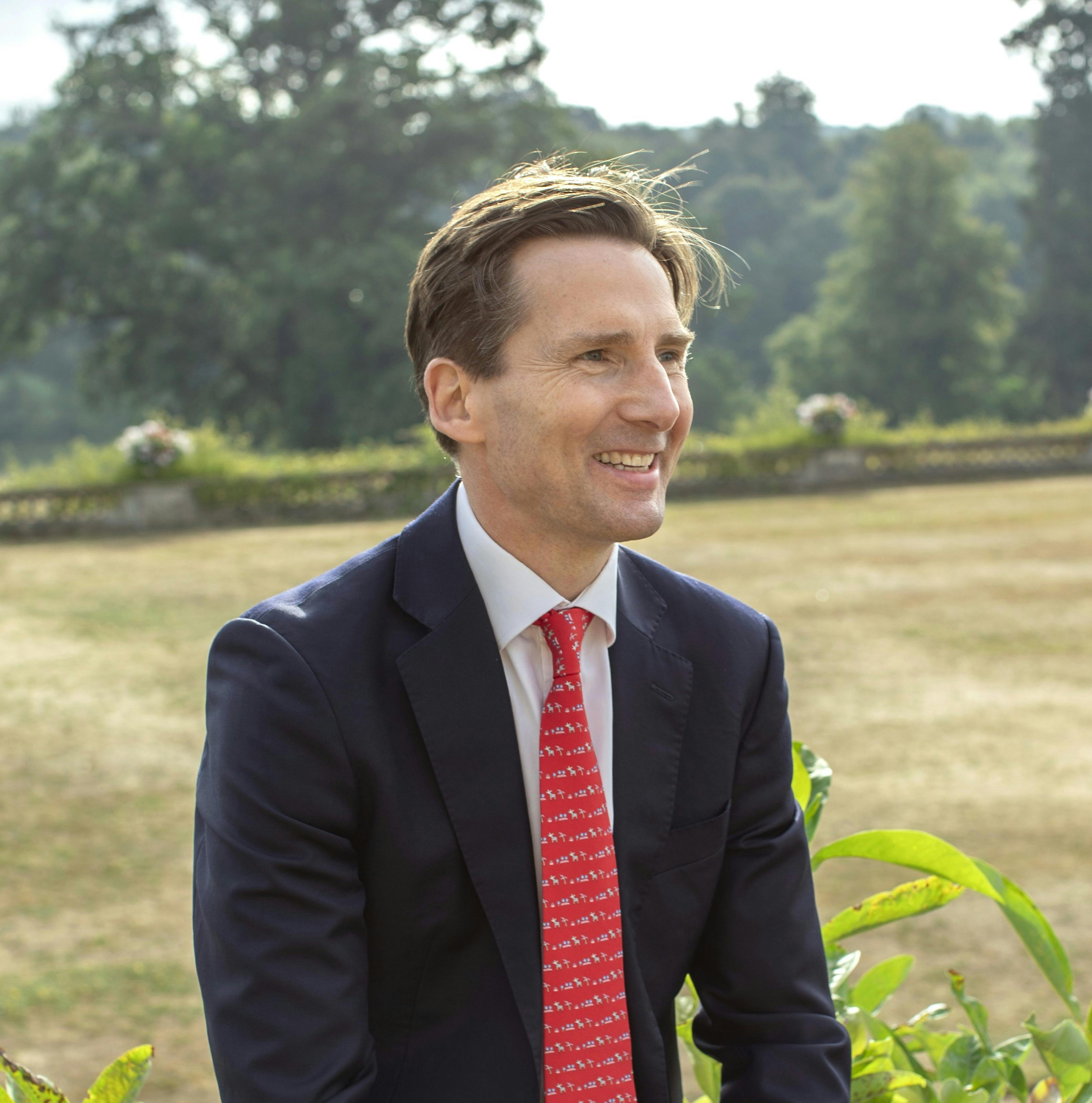DISCOVER A TIMELINE OF BOWOOD'S HISTORY
The History of Bowood
Since 1754, Bowood has been the cherished home of the Lansdowne family. Hidden away in the Wiltshire countryside, Bowood has become a thriving and vibrant estate, offering a variety of experiences for visitors, whilst conserving its unique history and idyllic surroundings.




1725 - 1740s
First House Construction And Ownership Changes
The first house at Bowood was started on the site of a Royal Hunting Lodge in 1725 by Sir Orlando Bridgeman, 2nd Baronet. Bridgeman purchased the property from the Crown, but due to financial troubles, he was forced to sell it unfinished. It remained in that state until the 1750s.

1750s- 1760s
House Extension And Landscape Design
The Estate and House were purchased in 1754 by the 1st Earl of Shelburne, whose Fitzmaurice ancestors settled in Ireland in the 12th century and were of French and Norman origin. Marriage between Thomas Fitzmaurice and Anne Petty, the only daughter of Sir William Petty, an economist and merchant, transformed the family’s situation. Anne’s second son, the 1st Earl of Shelburne, hired Henry Keene, an architect, to extend and remodel the unfinished Big House and add a service complex behind the building, called the Little House. In the 1760s Lancelot ‘Capability’ Brown, landscape designer, was commissioned to create a park with a sinuous lake, rolling lawns, and fine trees.
Soon after his father's death in 1761, the 2nd Earl, later Prime Minister (1782-83) and created 1st Marquess of Lansdowne (1784) for negotiating peace with America, began a major programme of improvements. Robert Adam, originally employed by the 1st Earl’s widow to build a mausoleum for her husband in the park, worked on the interior of the Big House and added the magnificent Diocletian Wing or Orangery to the Little House which still exists today.

1770s - 1790s
Oxygen, House Expansion and Garden Enhancements
On the 1st of August 1774 Joseph Priestley, a renowned chemist and theologian, then employed by the 2nd Earl as librarian and tutor to his sons, discovered oxygen in the laboratory at Bowood. This scientific achievement significantly advanced the field of chemistry and earned Bowood a place in scientific history. In 1775 the two parts of Bowood House, the Big house and the Little House were joined by the construction of a large drawing room and gallery. During the 1880s Charles Hamilton was commissioned to add a Cascade, Grottoes, and the Hermit's Cave by the lake.

1800s
Neglect
The 1st Marquis was never as wealthy as all these schemes suggest and on his death in 1805 he left large debts. The 2nd Marquess, his eldest son, did not return to Bowood and executors sold almost all the contents and fixtures. Several years of neglect followed until the 3rd Marquess, his half-brother, succeeded in 1809 and initiated a period of restoration.

1810s - 1820s
Renewal
In 1818 the Italianate Terrace Gardens designed by Sir Robert Smirke, architect, were completed. In 1821 Charles Cockerell, architect, was employed to create a chapel behind the central part of the Diocletian wing and to modify the library at the east end of the wing. Charles Barry, architect, was commissioned to build the clock tower and the Golden Gates, the main entrance to the park at Derry Hill. The bell in the clock tower is from the same Whitechapel foundry as Big Ben in London.

1830s - 1890s
Renaissance of Land and Buildings
During the 1830s the gardens were expanded with the addition of rare trees in the Pleasure Grounds and a pinetum was established. In memory of his forebear, Sir William Petty, in 1845, the 3rd Marquess commissioned Barry to construct the Lansdowne monument at Cherhill. The lower terraces designed by George Kennedy were completed in 1851. During the 1860's the 4th Marquess of Lansdowne remodelled the east terrace and relocated the Doric Temple folly to its present position beside the lake. The 5th Marquess continued to develop the estate increasing the acreage to 12,000 and building properties to house staff and tenants.

1900s - 1950s
Consolidation
Such was its growing reputation at the beginning of the 20th century that Bowood featured in various articles notably Country Life. During the First World War part of the Diocletian Wing was turned into a Military Hospital. It was opened and overseen by the 5th Marchioness. The Big House by this time was used largely for entertaining and the family lived in the Little House. The situation remained unchanged during the 6th Marquess’s tenure and up until the Second World War when Bowood was lived in by the 7th Marquess.
During the war the Big House was used firstly by Westonbirt Girls School and then by the RAF. Both the 7th Marquess and his brother were killed in action in 1944 and the title and the property passed to their cousin. The 8th Marquis found the Big House so dilapidated that in 1955 he took the difficult decision to demolish it and employ Frederick Sortain Samuels, architect, to convert the Little House into a more comfortable home.

1960s - 1970s
Revisited
Fixtures and fittings from the Big House were reconstructed in the Little House and others sold. The dining room was taken to London and installed at the Lloyds building where it served as the boardroom. In 1960 the Mausoleum was designated as Grade I listed and in 1972 the remaining parts of the house received the same status.
In 1973 the Earl of Shelburne (now 9th Marquis of Lansdowne) and his family moved into Bowood House. In 1975 the gardens were opened to the public and two years later parts of the house were too. In the late 1970s Hugh Roberts, Bath based architect, was commissioned to convert parts of the Diocletian Wing and Stable Wing of the house into a Kitchen, Restaurant, Shop, Sculpture Gallery and Exhibition Rooms.

1980s - 1990s
Further Diversification
Adding an adventure playground, a garden centre, a pick-your-own and two cafes, Bowood grew in the 1980s to accommodate the increasing number of visitors. In 1987 the Formal Garden, Pleasure Grounds, Park and Woodland Garden at Bowood were listed Grade I on the Register of Historic Parks and Gardens.
This designation recognised the exceptional historic interest of Bowood’s landscape, ensuring its preservation for future generations. In 1992, an 18-hole championship golf course and clubhouse was opened in the park and in 1998 conference suites followed.

2000s - present
New Visitor Experiences
In 2000 Bowood House was designated an ACS National Historic Chemical Landmark for Joseph Priestley’s discovery of oxygen. In 2007 divers discovered the remains of the submerged Manning’s Hill hamlet in the lake. As the corporate and leisure business at Bowood grew it was decided to build a luxury Hotel and Spa in the park. The new building was opened in 2009 by the then Duchess of Cornwall now Queen Camilla.
In 2025, to celebrate the 50th anniversary of welcoming visitors, the Walled Garden was opened to the public. Balancing the unique heritage and landscape alongside the needs of the wider business is central to what the estate does. The preservation and conservation of Bowood House and Gardens is an ongoing process largely made possible by support from many stakeholders including visitors and the local community.

Exploring Bowood House Today
Visitors to Bowood House can explore the family library with a collection of many thousands of books acquired by the 3rd Marquess, the laboratory which offers a glimpse into the history of science, the chapel which is still used for family and local parish services.
The Orangery which showcases the Lansdowne collection of art, the sculpture gallery, which in the 18th century was a menagerie for wild animals including a leopard and orangutan, and now houses the Lansdowne sculpture collection. The exhibition rooms which display a fascinating array of family treasures including Napoleon's death mask, Queen Victoria's wedding chair, a collection of unusual Indian objects and many fine watercolours.

The Earl of Kerry
The Earl of Kerry was educated at Eton College and at Cambridge University. He is a business owner and historian. He serves on various boards and committees for organisations and manages the Estate at Bowood.


